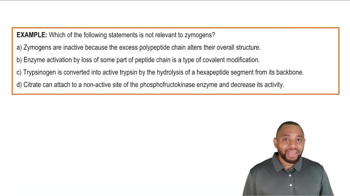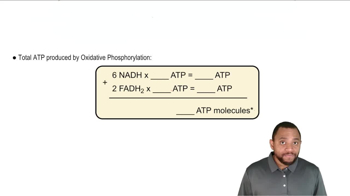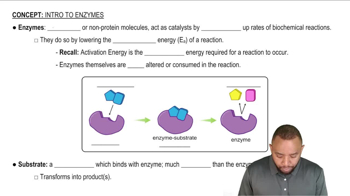Textbook Question
What type of enzyme regulation occurs in the following situations?
a. Buildup of the product of the pathway that converts glucose to pyruvate stops at the first enzyme in the multistep process.
48
views
 Verified step by step guidance
Verified step by step guidance



What type of enzyme regulation occurs in the following situations?
a. Buildup of the product of the pathway that converts glucose to pyruvate stops at the first enzyme in the multistep process.
How do you explain the observation that pepsin, a digestive enzyme found in the stomach, has a high catalytic activity at pH 1.5, while trypsin, an enzyme of the small intestine, has no activity at pH 1.5?
What are the cellular advantages to feedback inhibition?
Name an enzyme that acts on each molecule.
c. DNA
Name an enzyme that acts on each molecule.
c. RNA
What classes of enzymes would you expect to catalyze the following reactions?
c. <IMAGE>